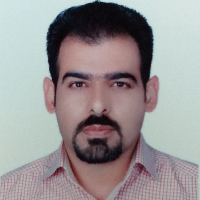Qualitative assessment of Shiraz wastewater treatment plant effluent for different purposes
Today, treated wastewater is widely used on agricultural soils adjacent to urban areas of developing countries to meet water shortages. On the other hand, due to the pollution increase, the limited available resources are threatened. For the production of crops, unconventional water is used in many countries of the world if it has the necessary standard, and municipal wastewater treatment plants are a very reliable source due to their ability to deliver sustainable water in all seasons. In recent years, several studies have been conducted in the field of the effluent quality of municipal wastewater treatment plants and the possibility of using them in various applications, including agriculture, in different regions of Iran. Due to the water crisis that has arisen, especially in arid and semi-arid regions of the country, it is necessary to study and analyze the possibility of further use of this unconventional water resource. However, wastewater recycling can have various health and environmental effects.
In this study, the effluent quality of the Shiraz municipal wastewater treatment plant was investigated using the daily data during 2018 and 2019 for use in various purposes such as irrigation of crops, irrigation of green spaces, drinking of livestock and poultry, fish farming, discharge into streams, artificial recharge of groundwater based on national and international standards. In this regard, at first, the values of various physical and chemical parameters such as acidity, electrical conductivity, total dissolved solids, total suspended solids, total volatile solids, total solids, chemical oxygen demand, biochemical oxygen demand, turbidity, dissolved oxygen, detergents, phosphate, total phosphorus, nitrate, nitrite, ammonia, Kjeldahl total nitrogen, free chlorine, and fat-oil-grease were determined in raw and treated wastewater. Then, while comparing the values of these parameters with the standard of the Environmental Protection Organization of Iran, the removal efficiencies of these parameters were calculated and finally, the quality of the effluent was investigated for use in various sectors.
The results showed that the removal efficiency of BOD5, COD, TSS, NH3, detergents, and fat-oil-grease in this treatment plant is 85, 85, 67, 64, 94, and 68.5%, respectively. The quality of the effluent is only suitable for agricultural purposes based on the standard of the Environmental Organization of Iran, and according to other standards, it is not capable of such use. This effluent can be used to irrigate ornamental fruit trees, fodder crops, plenteous trees and green spaces side of the roads outside the city, field crops, industrial crops, and forestry, as well as drinking livestock and poultry. However, there are limitations for urban green space irrigation, fish farming, discharge to surface waters (such as Maharloo lake in the vicinity of the wastewater plant), and groundwater recharge, although some of these limitations can be improved by upgrading the function of the treatment plant. By irrigating unfruitful plants and forest parks around Shiraz and even part of urban green space, the pressure on water resources can be reduced to a great extent. On the other hand, the continuation of irrigation with this effluent, which contains organic and nutritious substances in a large proportion, has caused an increase in soil nitrate, and it will be possible to leach and transfer it to surface and underground water sources.
The amount of quality parameters of the treatment plant effluent is within the standard of Iranian Environmental Protection and can be used as a sustainable water source in areas that are not directly related to humans. In using this sustainable water source for permitted uses, all health issues for the workers of each sector must be observed, and the effluent must be continuously disinfected.
پرداخت حق اشتراک به معنای پذیرش "شرایط خدمات" پایگاه مگیران از سوی شماست.
اگر عضو مگیران هستید:
اگر مقاله ای از شما در مگیران نمایه شده، برای استفاده از اعتبار اهدایی سامانه نویسندگان با ایمیل منتشرشده ثبت نام کنید. ثبت نام
- حق عضویت دریافتی صرف حمایت از نشریات عضو و نگهداری، تکمیل و توسعه مگیران میشود.
- پرداخت حق اشتراک و دانلود مقالات اجازه بازنشر آن در سایر رسانههای چاپی و دیجیتال را به کاربر نمیدهد.



